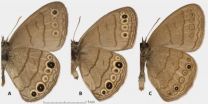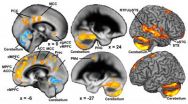(Press-News.org) A proposal for reformulating the foundations of biology, based on the 2nd law of thermodynamics and which is in sharp contrast to the prevailing genetic view, is published today in the Journal of the Royal Society Interface under the title "Genes without prominence: a reappraisal of the foundations of biology". The authors, Arto Annila, Professor of physics at Helsinki University and Keith Baverstock, Docent and former professor at the University of Eastern Finland, assert that the prominent emphasis currently given to the gene in biology is based on a flawed interpretation of experimental genetics and should be replaced by more fundamental considerations of how the cell utilises energy. There are far-reaching implications, both in research and for the current strategy in many countries to develop personalised medicine based on genome-wide sequencing.
Is it in your genes?
By "it" we mean intelligence, sexual orientation, increased risk of cancer, stroke or heart attack, criminal behaviour, political preference and religious beliefs, etcetera. Genes have been implicated in influencing, wholly or partly, all these aspects of our lives by researchers. Genes cannot cause any of these features, although geneticists have found associations between specific genes and all of these features, many of which are entirely spurious and a few are fortuitous.
How can we be so sure?
When a gene, a string of bases on the DNA molecule, is deployed, it is first transcribed and then translated into a peptide – a string of amino acids. To give rise to biological properties it needs to "fold" into a protein.
This process consumes energy and is therefore governed by the 2nd law, but also by the environment in which the folding takes place. These two factors mean that there is no causal relationship between the original gene coding sequence and the biological activity of the protein.
Is there any empirical evidence to support this?
Yes, a Nordic study of twins conducted in 2000 showed there was no evidence that cancer was a "genetic" disease – that is – that genes play no role in the causation of cancer. A wider international study involving 50,000 identical twin pairs published in 2012, showed that this conclusion applied to other common disease as well. Since the sequencing of the human genome was completed in 2001 it has not proved possible to relate abnormal gene sequences to common diseases giving rise to the problem of the "missing heritability".
What is the essence of the reformulation?
At the most fundamental level organisms are energy-consuming systems and the appropriate foundation in physics is that of complex dissipative systems. As energy flows in and out and within, the complex molecular system called the cell, fundamental physical considerations, dictated by the 2nd law of thermodynamics, demand that these flows, called actions, are maximally efficient (follow the path of least resistance) in space and time. Energy exchanges can give rise to new emergent properties that modify the actions and give rise to more new emergent properties and so on. The result is evolution from simpler to more complex and diverse organisms in both form and function, without the need to invoke genes. This model is supported by earlier computer simulations to create a virtual ecosystem by Mauno Rönkkö of the University of Eastern Finland.
What implications does this have in practice?
There are many, but two are urgent.
1) to assume that genes are unavoidable influences on our health and behaviour will distract attention from the real causes of disease, many of which arise from our environment;
2) the current strategy towards basing healthcare on genome-wide sequencing, so called "personalised healthcare", will prove costly and ineffective.
What is personalised health care?
This is the idea that it will be possible to predict at birth, by determining the total DNA sequence (genome-wide sequence), health outcomes in the future and take preventive measures. Most European countries have research programmes in this and in the UK a pilot study with 100,000 participants is underway.
Contacts:
Keith Baverstock:
http://www.kbaverstock.org/
keith.baverstock (at) uef.fi
keith.baverstock (at) googlemail.com
Up to 19 February: +35897275710
From noon 20 February: +4922892989952
Arto Annila
http://www.helsinki.fi/~aannila/arto/
arto.annila (at) helsinki.fi
+358 44 2047324
A challenge to the genetic interpretation of biology
2014-02-19
ELSE PRESS RELEASES FROM THIS DATE:
Two new butterfly species discovered in eastern USA
2014-02-19
Butterflies are probably best-loved insects. As such, they are relatively well studied, especially in the United States. Eastern parts of the country are explored most thoroughly. First eastern US butterfly species were described by the father of modern taxonomy Carl Linnaeus himself, over 250 years ago. For the last two and a half centuries, naturalists have been cataloguing species diversity of eastern butterflies, and every nook and cranny has been searched. Some even say that we learned everything there is to know about taxonomy of these butterflies.
Discovery of ...
Targeted treatment for ovarian cancer discovered
2014-02-19
Researchers at Women & Infants Hospital of Rhode Island have developed a biologic drug that would prevent the production of a protein known to allow ovarian cancer cells to grow aggressively while being resistant to chemotherapy. This would improve treatment and survival rates for some women.
The work coming out of the molecular therapeutic laboratory directed by Richard G. Moore, MD, entitled "HE4 (WFDC2) gene overexpression promotes ovarian tumor growth" was recently published in the international science journal Scientific Reports, a Nature publishing group.
"We ...
UNH research: Most of us have made best memories by age 25
2014-02-19
DURHAM, N.H. – By the time most people are 25, they have made the most important memories of their lives, according to new research from the University of New Hampshire.
Researchers at UNH have found that when older adults were asked to tell their life stories, they overwhelmingly highlighted the central influence of life transitions in their memories. Many of these transitions, such as marriage and having children, occurred early in life.
"When people look back over their lives and recount their most important memories, most divide their life stories into chapters ...
How stick insects honed friction to grip without sticking
2014-02-19
When they're not hanging upside down, stick insects don't need to stick. In fact, when moving upright, sticking would be a hindrance: so much extra effort required to 'unstick' again with every step.
Latest research from Cambridge's Department of Zoology shows that stick insects have specialised pads on their legs designed to produce large amounts of friction with very little pressure. When upright, stick insects aren't sticking at all, but harnessing powerful friction to ensure they grip firmly without the need to unglue themselves from the ground when they move. ...
Addicted to tanning?
2014-02-19
BOWLING GREEN, O.—They keep tanning, even after turning a deep brown and experiencing some of the negative consequences. Skin cancer is among the most common, preventable types of the disease, yet many continue to tan to excess.
Research from Lisham Ashrafioun, a Bowling Green State University Ph.D. student in psychology, and Dr. Erin Bonar, an assistant professor of psychiatry at the University of Michigan Addiction Research Center and a BGSU alumna, shows that some who engage in excessive tanning may also be suffering from obsessive-compulsive (OCD) and body dysmorphic ...
A forgotten model of the universe
2014-02-19
A paper published in EPJ H provides the first English translation and an analysis of one of Albert Einstein's little-known papers, "On the cosmological problem of the general theory of relativity." Published in 1931, it features a forgotten model of the universe, while refuting Einstein's own earlier static model of 1917. In this paper, Einstein introduces a cosmic model in which the universe undergoes an expansion followed by a contraction. This interpretation contrasts with the monotonically expanding universe of the widely known Einstein-de Sitter model of 1932.
The ...
Family problems experienced in childhood and adolescence affect brain development
2014-02-19
New research has revealed that exposure to common family problems during childhood and early adolescence affects brain development, which could lead to mental health issues in later life.
The study led by Dr Nicholas Walsh, lecturer in developmental psychology at the University of East Anglia (UEA), used brain imaging technology to scan teenagers aged 17-19. It found that those who experienced mild to moderate family difficulties between birth and 11 years of age had developed a smaller cerebellum, an area of the brain associated with skill learning, stress regulation ...
Minor added benefit of indacaterol/glycopyrronium in COPD
2014-02-19
The drug combination indacaterol/glycopyrronium (trade name: Ultibro Breezhaler, Xoterna Breezhaler) has been approved since September 2013 for adults with chronic obstructive pulmonary disease (COPD). In an early benefit assessment pursuant to the Act on the Reform of the Market for Medicinal Products (AMNOG), the German Institute for Quality and Efficiency in Health Care (IQWiG) examined whether this drug combination offers an added benefit over the appropriate comparator therapy.
According to the findings, the drug combination is better at relieving breathing difficulties ...
Afatinib: Added benefit depends on mutation status
2014-02-19
Afatinib (trade name: GIOTRIF) has been approved in Germany since September 2013 for the treatment of adult patients with locally advanced or metastatic non-small cell lung cancer (NSCLC) with activating EGF receptor mutations who have not been treated with an EGF receptor tyrosine-kinase inhibitor (EGFR TKI). In an early benefit assessment pursuant to the Act on the Reform of the Market for Medicinal Products (AMNOG), the German Institute for Quality and Efficiency in Health Care (IQWiG) examined whether this new drug offers an added benefit over the appropriate comparator ...
Scientists identify 'long distance scanner' for DNA damage
2014-02-19
Scientists at the University of Bristol have discovered that a mechanism for preventing mutation within important genes involves long distance scanning of DNA by a molecular motor protein.
The results, published in the Proceedings of the National Academy of Sciences (PNAS), show that the method for detecting DNA damage within active genes is more sophisticated than previously thought.
The research team hope that the mechanistic insights provided by this study will help to explain the complicated genome-wide patterns of mutation that underlie the evolution of new species, ...



